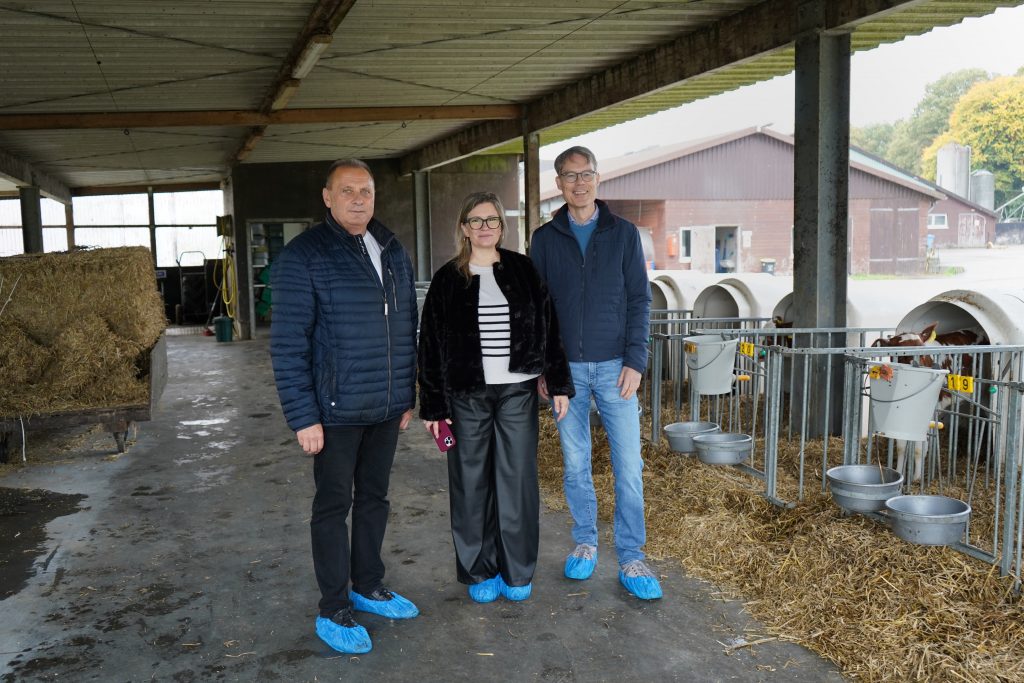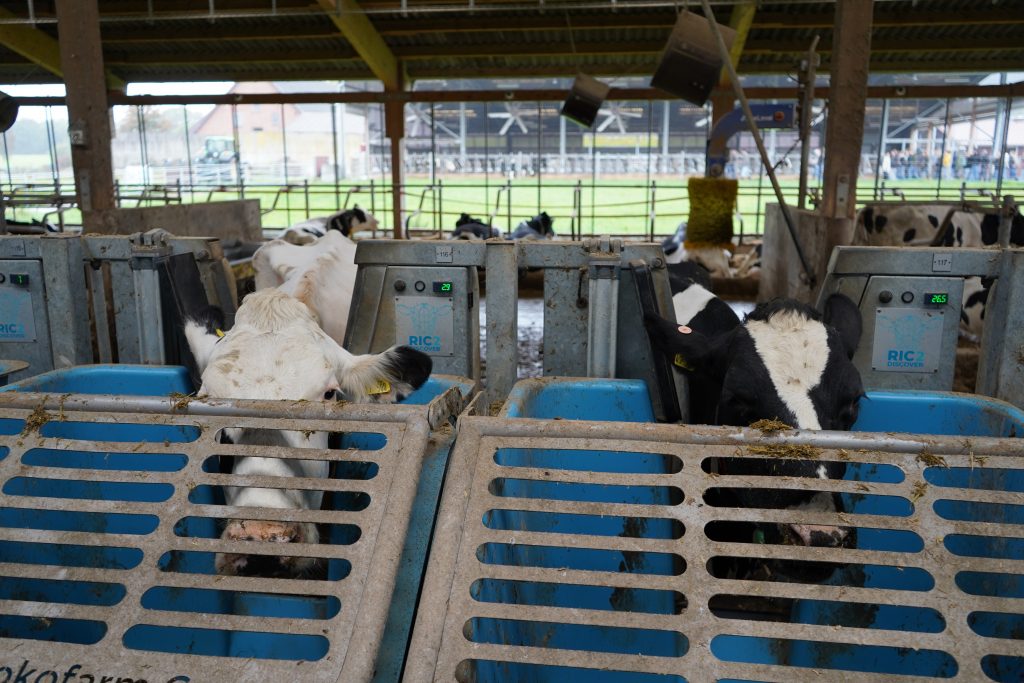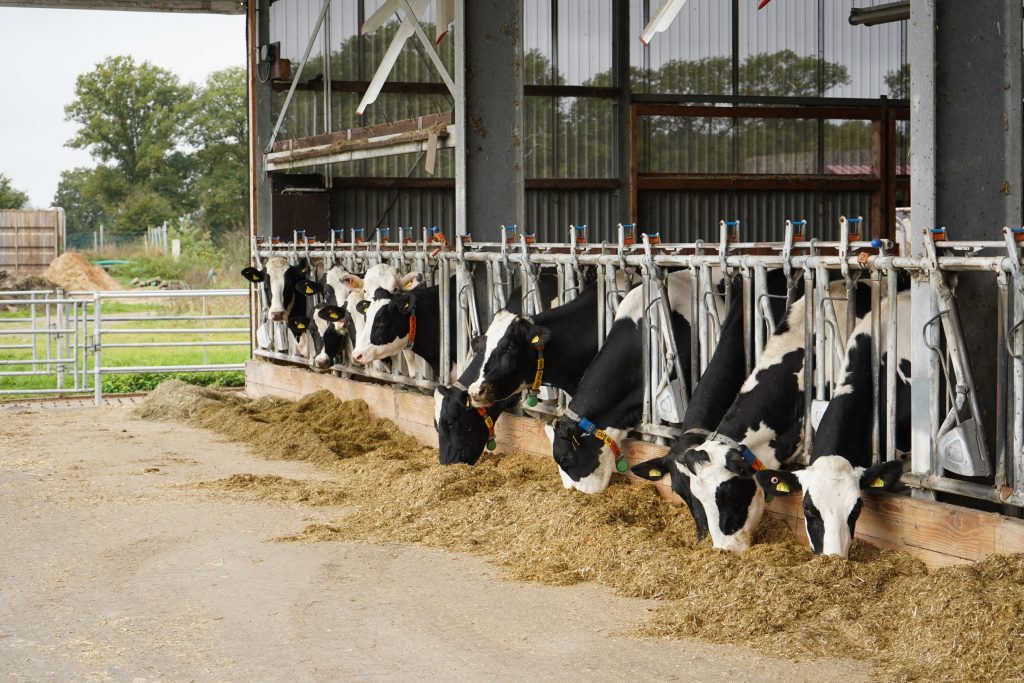As part of the international project “German-Ukrainian Network of Universities (DUHN): Academic Cooperation and Teaching Initiative Kiel-Kherson (ACTI-K²),” initiated by the German Academic Exchange Service (DAAD), a delegation from Kherson State Agrarian and Economic University (KSAEU) visited Kiel University (CAU) from 13 to 16 October 2025. As part of this visit, an excursion to the Karkendamm Experimental Farm of the Faculty of Agricultural and Nutritional Sciences was organized. The visit was arranged by Prof. Dr. Kai Carstensen, Head of ACTI-K², for Prof. Dr. Viktoriia Hranovska, Vice-Rector of KSAEU, and Prof. Dr. Oleksandr Averchev, Head of the Department of Agriculture at KSAEU.

During the excursion, the delegation from Kherson was introduced to the research activities conducted in the dairy cattle barn, including breeding for feed intake efficiency, cultivation of domestic protein and energy crops, measurement of methane emissions, and the study of bioactive plant compounds.
In general, the Karkendamm Experimental Farm accommodates around 200 dairy cows and an additional 200 calves and young heifers. The surrounding farmland is used for maize, grass, winter wheat, winter barley, winter rye, soybeans, rapeseed, and forage production.

A distinctive feature of the Karkendamm facility is its advanced weighing trough system, which records the individual feed intake of each cow, together with an automated slurry management system that enables the separate measurement of slurry quantities for each animal group. These systems allow researchers to precisely trace the nutrient flow from feed through the dairy cow to the final products — milk and manure. Data on milk yield and feed consumption are gathered through automated weighing and milking systems, while weekly sampling provides detailed insights into the nutrient composition of the manure.
The barn is also equipped with a fiber-optic network connection, ensuring fast data transmission and efficient maintenance of research equipment. Additionally, motion sensors and transponders attached to the cows’ legs continuously record activity and behavior, supplying real-time data for further analysis.

As a result, the dairy barn is highly digitalized and serves as an outstanding research environment. For each cow, individual digital profiles are created, offering valuable information on genetic characteristics, enabling early detection of diseases, and facilitating comparisons of breed-specific milk production efficiency. Through this comprehensive data collection, the experimental dairy barn at the Karkendamm site supports research on animal welfare, animal health, and efficient nutrient utilization.
During the visit, the delegation from KSAEU engaged in active discussions with German researchers, exchanging experiences and comparing research methods and experimental approaches used in Ukraine and Germany. Such excursions play a vital role in strengthening academic cooperation and in fostering long-term partnerships between the two universities.